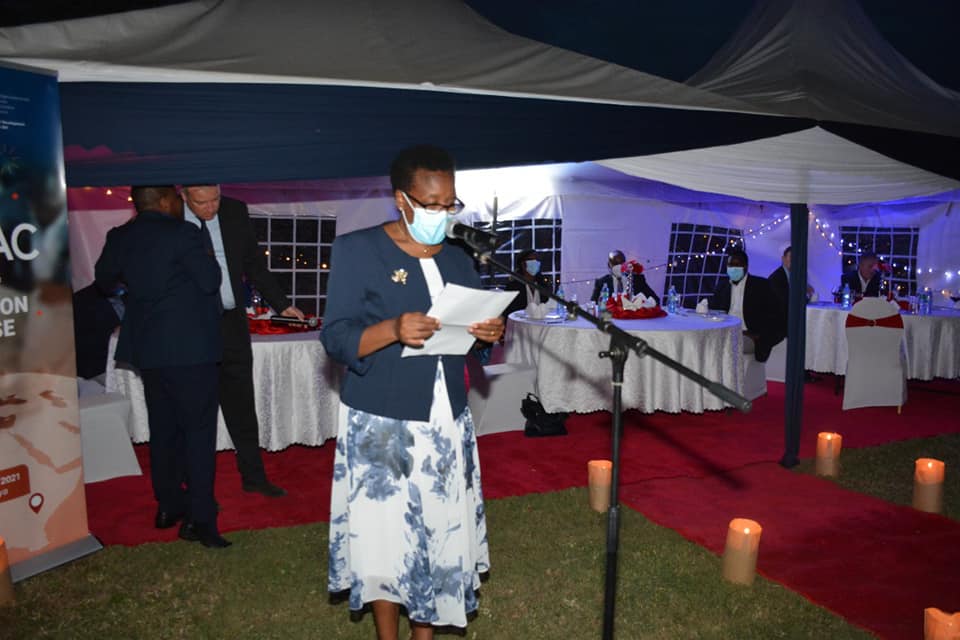

Maxaas is just one of the many towns in Somalia under these conditions. Because of the poor grazing, milk production is low and families have less food on their tables. Fifty per cent of the towns 2,000 households are pastoralists. These water sources are used by people and animals and water purification tablets are desperately needed to curtail waterborne diseases. There is only one bore hole and one spring.

There have been no vaccinations in Maxaas since 2007. With no health facilities in Maxaas, the nearest hospital or primary care access is Belet Weyne, some 125km away. The only possible supply route is from Bossaso through Gaalkacyo and Belet Weyne which has resulted in doubling of food prices for basic staples such rice, sugar, oil and flour, stretching coping mechanisms of already vulnerable families.”

“The main access to food for the community was from the capital of Mogadishu, but insecurity has resulted in the supply routes being blocked off. “Humanitarian needs here are immense,” reported Wosornu. The most urgent needs identified were food, healthcare, water, sanitation, education and livestock immunization. The assessment team met with local authorities and elders to get an overview of the needs of the communities in the area. The visit to Maxaas was part of the aid community’s efforts to assess newly accessible areas across the country, and deliver aid to communities in order to reverse the deteriorating humanitarian situation. We just need to support the people of Maxaas to get more food at less prices.” Now here as I said is relatively secure, the second thing is access to food is there. “If you looked at the causes of famine in 2011, they were four, insecurity and conflict, access to people, food prices that were increasing and luck of funding. “For a location like Maxaas, access to food is key,” said Edem Wosornu, OCHA Somalia’s acting Director who led the mission to Maxaas. Maxaas is the fifth of ten newly accessible areas recovered from Al Shabaab control by the Somalia National Armed Forces and AMISOM two months ago to be assessed to determine urgent humanitarian needs and plan a response. Med shot, Maxaas government and humanitarian officials walking through townĪid agencies, led by the United Nations Office for the Coordination of Humanitarian Affairs (OCHA), travelled to Maxaas in Hiraan Region on 28 May to assess the humanitarian situation on the ground. Wide shot, Maxaas government and humanitarian officials walking through townġ4. We did that and we will try and do the same here."ġ3. Supplies that are not too heavy, that can be transported relatively easy. Now what we did, in some of these newly accessible areas, we brought in medical supplies, polio vaccinations. “We have to go back reassess what we have in stock, see what the needs are, and try and bring in assistance. SOUNDBITE (English) Edem Wosornu, OCHA Somalia’s Acting Director: Close up, Wosornu talking to children at the wellġ2. Wide shot, Maxaas government officials showing the community water wellĩ. We just need to support the people of Maxaas to get more food at less prices.”Ĩ.

“For a location like Maxaas, access to food is key, if you looked at the causes of famine in 2011 they were four, insecurity and conflict, access to people, food prices that were increasing and luck of funding. Close up, Wosornu talking to the local communityħ. Med shot, Wosornu talking to the local communityĦ. Wide shot, Edem Wosornu, OCHA Somalia’s acting Director talking to the local communityĥ. Close up, Maxaas government and humanitarian officials walking through townĤ. Med shot, Maxaas government and humanitarian officials walking through townģ. Wide shot, Maxaas government and humanitarian officials walking through townĢ.


 0 kommentar(er)
0 kommentar(er)
